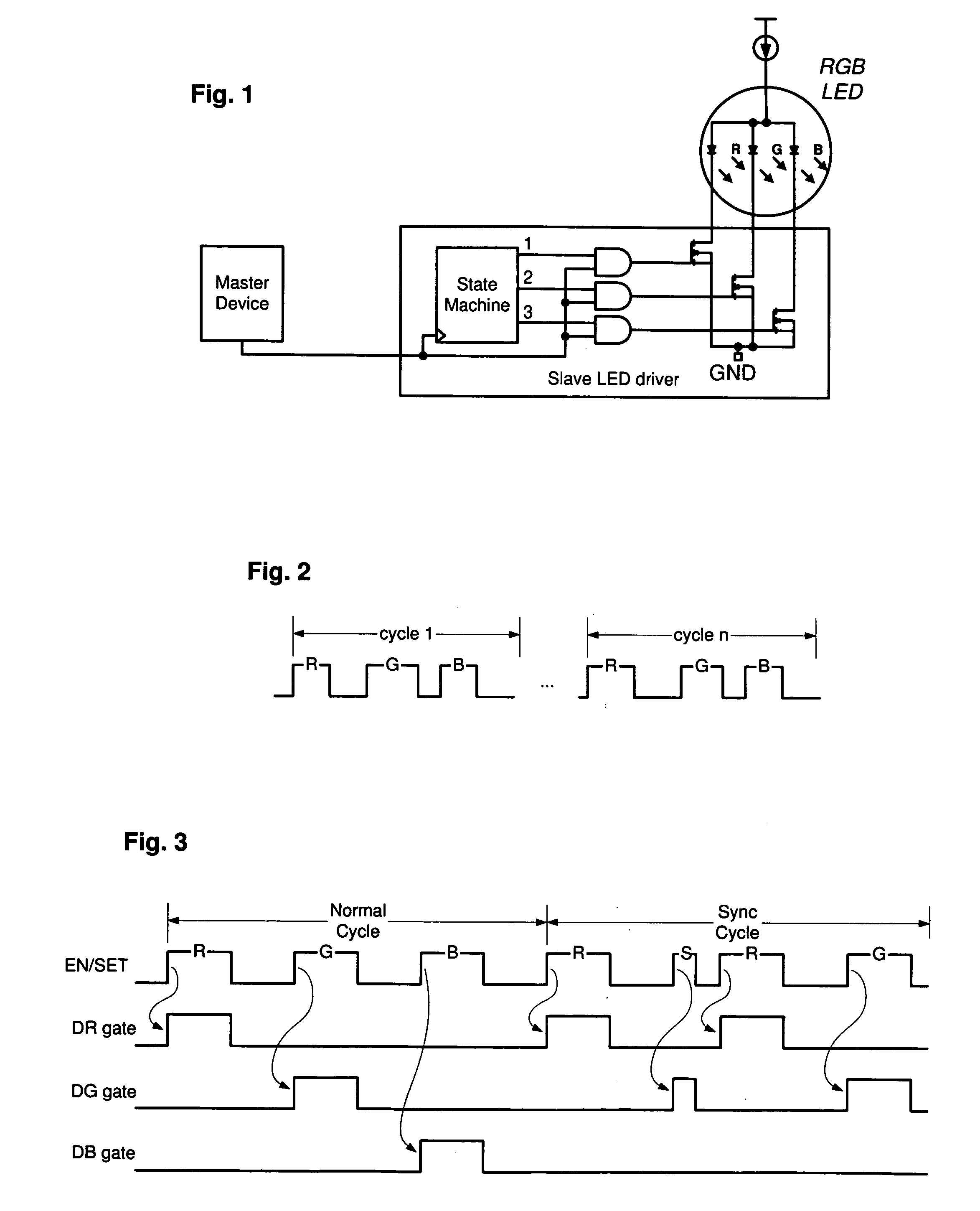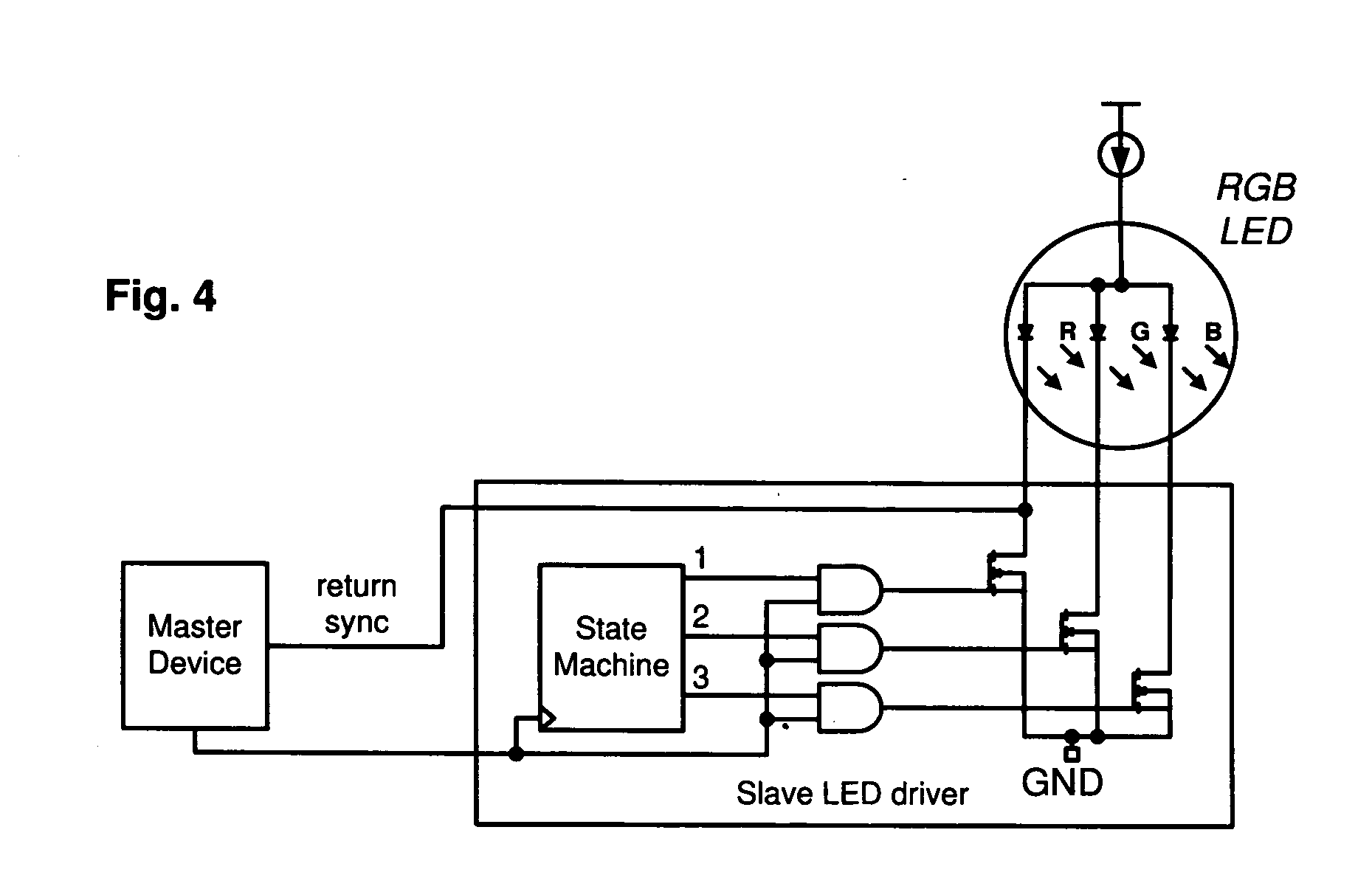Single wire serial protocol for RGB LED drivers
a single-wire serial and led driver technology, applied in the field of drivers, can solve the problems of inability to implement analog control signals, inability to meet the needs of two to three leads, and inherently error-prone use of analog signals
- Summary
- Abstract
- Description
- Claims
- Application Information
AI Technical Summary
Benefits of technology
Problems solved by technology
Method used
Image
Examples
Embodiment Construction
[0017] The present invention provides a method for RGB LED control using a single wire serial interface. As shown in FIG. 1, a typical implementation that uses this method includes a master device connected (via a single wire serial line) to a slave LED driver. The slave LED driver is connected, in turn to an RGB LED. Internally, the slave LED driver includes a state machine that translates signals on the serial line into signals that drive the RGB LED.
[0018] To control the RGB LED, the master device controls the voltage on the serial line to encode a repeating series of pulses. As shown in FIG. 2, the series of pulses are arranged in an interleaved pattern: red, green, blue, red, green, blue and so on. The width of each pulse is variable so, for example the red pulse in cycle n is longer than the red pulse in cycle 1. The green pulse in cycle n is also shorter than the green pulse in cycle 1.
[0019] The state machine in the slave LED driver demultiplexes this repeating pattern. Th...
PUM
 Login to View More
Login to View More Abstract
Description
Claims
Application Information
 Login to View More
Login to View More - R&D
- Intellectual Property
- Life Sciences
- Materials
- Tech Scout
- Unparalleled Data Quality
- Higher Quality Content
- 60% Fewer Hallucinations
Browse by: Latest US Patents, China's latest patents, Technical Efficacy Thesaurus, Application Domain, Technology Topic, Popular Technical Reports.
© 2025 PatSnap. All rights reserved.Legal|Privacy policy|Modern Slavery Act Transparency Statement|Sitemap|About US| Contact US: help@patsnap.com


